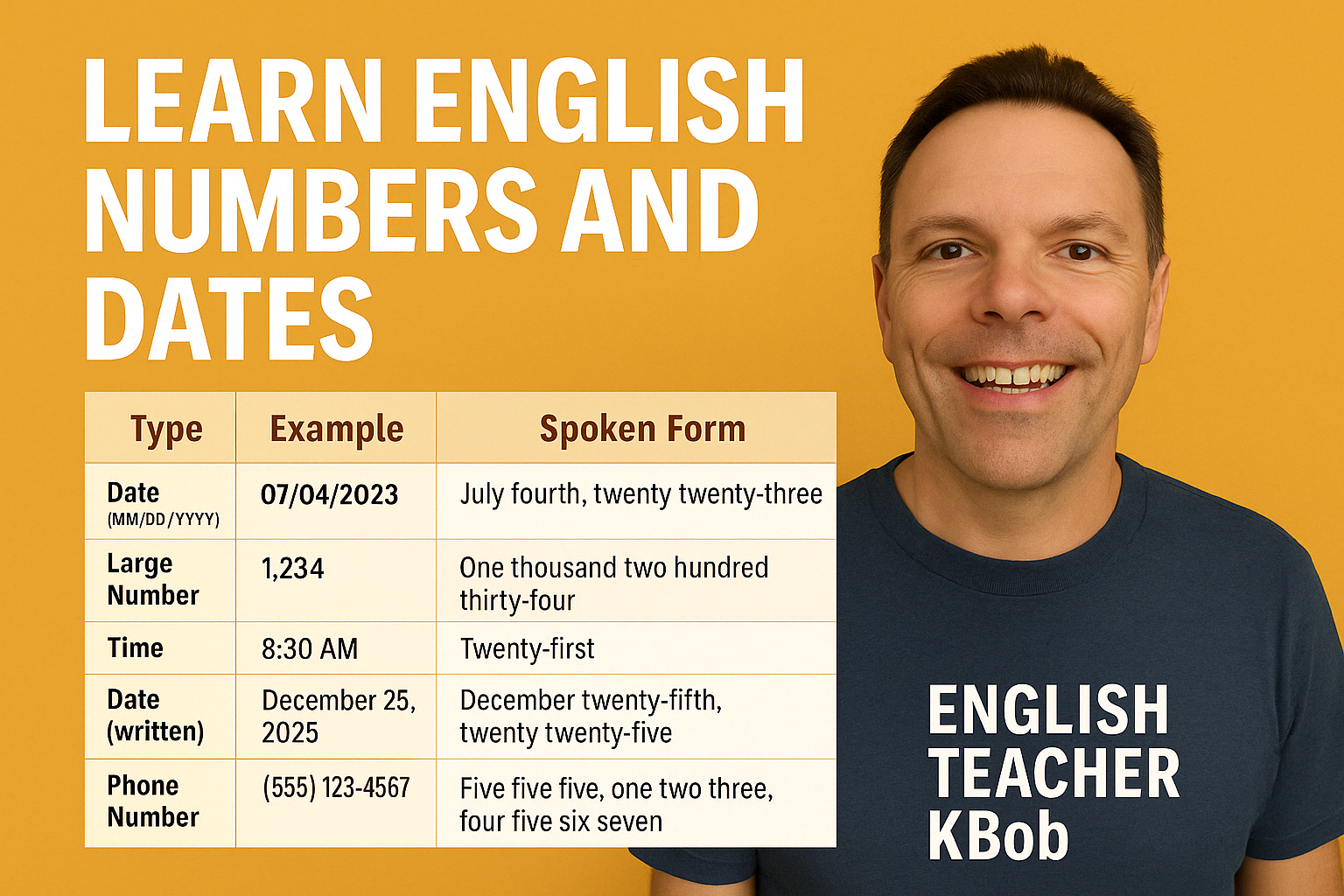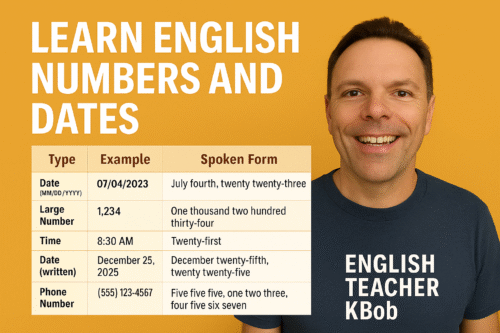Teach numbers, days, and dates in English with this free sample and full ESL lesson for beginner students.

Guess what? When you click and buy through our links, you’re doing more than improving your game. You’re supporting us in a way that doesn’t cost you extra but helps us keep bringing you the best drills and tips. It’s a slam dunk for both of us!
❓How can English learners master numbers and dates with confidence?
By practicing real-life conversations, using visual tools like flashcards, and building vocabulary through step-by-step lessons that connect directly to daily life.
This lesson gives learners the tools to talk about birthdays, appointments, holidays, and more — using numbers and dates in natural, meaningful ways.
📚 Table of Contents
Learning numbers, days, and dates in English is essential for real-life conversations. Whether you’re scheduling a doctor’s appointment, talking about your birthday, or planning a holiday, these are vocabulary skills you’ll use every day.
In this lesson, you’ll practice how to say numbers, use ordinal forms like “1st” and “2nd,” and ask questions like “What day is it?” or “When is your birthday?”
This post includes a free download to help you practice — and a complete lesson bundle for teachers available on Teachers Pay Teachers.
📘 What You’ll Learn
This lesson is perfect for beginners and covers:
- ✅ Numbers 1–31
- ✅ Ordinal numbers (1st–31st)
- ✅ Days of the week
- ✅ Months of the year
- ✅ Common questions like “What’s today’s date?” and “What day is that?”
🛍️ Get the Full Lesson Packet
If you like the sample, you’ll love the full bundle!
📦 The full lesson includes:
- Printable worksheets (3 types)
- Flashcards (numbers, ordinals, days, and months)
- Role-play cards
- Speaking practice
- Quiz + answer key
- Editable Word files for easy use
🛒 👉 Get the full lesson on Teachers Pay Teachers
🎬 Bonus Speaking Practice
Want to practice more?
Ask your classmates:
“When is your birthday?”
“What day of the week is that this year?”
✅ Final Thoughts
Numbers and dates are everywhere — and this lesson gives you the tools to use them with confidence. Whether you’re learning English or teaching it, these activities make communication easier and more fun.
Download your free samples, and grab the full bundle if you’re ready to go deeper.
🛒 Get The Full Lesson on TPT


In my experience helping English learners, numbers and dates often seem “easy” at first, but can trip people up in real conversations. For example, someone might know the numbers 1–31 perfectly in a list, but freeze when asked, “What’s today’s date?” or mispronounce “twenty-third” instead of “twenty-thirty.” Practicing in context such as mock appointments or birthday party planning really builds the confidence learners need. Mastering numbers and dates is a crucial but often underestimated part of learning English. They show up constantly in daily life from telling someone your birthday, to making a dentist appointment, or discussing future plans. Without a strong grasp of numbers and dates, learners can feel lost in real-world situations. This article smartly emphasizes practice through natural conversations and visual aids like flashcards, which really help reinforce memory through repetition and active use. Offering both free samples and a full lesson packet makes it easier for both students and teachers to find what fits their needs.Why is it important for English learners to focus specifically on numbers and dates early on? How do visual tools like flashcards improve memory retention for numbers and dates?
Hi again Rae. Thanks for your comments. I believe your questions were answered by your AI companion in your comments.
KBob